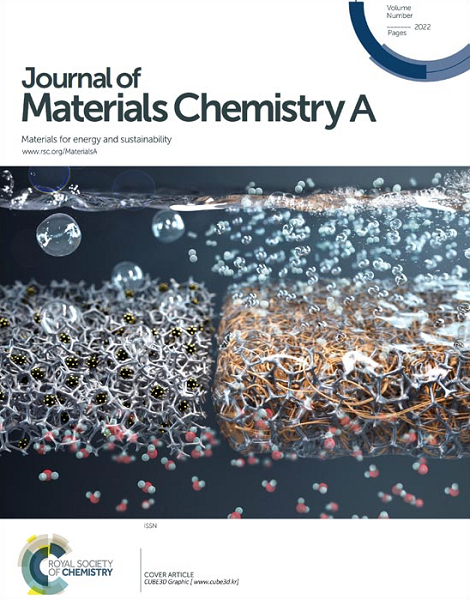Optimizing d-p Orbital Hybridization by Tuning High-Entropy Spinel Oxides for Enhanced Alkaline OER Efficiency
IF 10.7
2区 材料科学
Q1 CHEMISTRY, PHYSICAL
引用次数: 0
Abstract
The growing need for cost-effective and efficient energy conversion technologies drives the development of advanced catalysts for the oxygen evolution reaction (OER). Our research focuses on high-entropy spinel oxides (HESOs) as efficient OER electrocatalysts. Using the molten salt synthesis method, we prepared HESO nanoparticles from Fe, Ni, Co, Mn, and Zn. By adjusting the precursor ratios, we obtained equimolar (Ni0.2Fe0.2Co0.2Mn0.2Zn0.2)3O4, CoMn-rich, and NiFe-rich samples to examine compositional effects. Among these, the CoMn-rich HESO sample exhibited superior catalytic performance in 1 M KOH solution, with an overpotential of 330.1 mV at 10 mA cm−2 and a Tafel slope of 53.5 mV dec−1. Its promising long-term stability and enhanced reaction kinetics are significant. Density functional theory (DFT) calculations and experimental results indicate that the increased Co3+ species and enhanced oxygen adsorption on the CoMn-rich HESO lower the energy barrier and accelerate electron transfer, improving the reaction kinetics. The Density of states (DOS) analysis further reveals the stronger covalency of metal active site 3d and O 2p on the surface of CoMn-rich favor the absorption of oxygen species and thus improve the electrochemical performance. This work presents an effective method for HESO synthesis and opens new avenues for energy conversion research.求助全文
约1分钟内获得全文
求助全文
来源期刊

Journal of Materials Chemistry A
CHEMISTRY, PHYSICAL-ENERGY & FUELS
CiteScore
19.50
自引率
5.00%
发文量
1892
审稿时长
1.5 months
期刊介绍:
The Journal of Materials Chemistry A, B & C covers a wide range of high-quality studies in the field of materials chemistry, with each section focusing on specific applications of the materials studied. Journal of Materials Chemistry A emphasizes applications in energy and sustainability, including topics such as artificial photosynthesis, batteries, and fuel cells. Journal of Materials Chemistry B focuses on applications in biology and medicine, while Journal of Materials Chemistry C covers applications in optical, magnetic, and electronic devices. Example topic areas within the scope of Journal of Materials Chemistry A include catalysis, green/sustainable materials, sensors, and water treatment, among others.
 求助内容:
求助内容: 应助结果提醒方式:
应助结果提醒方式:


